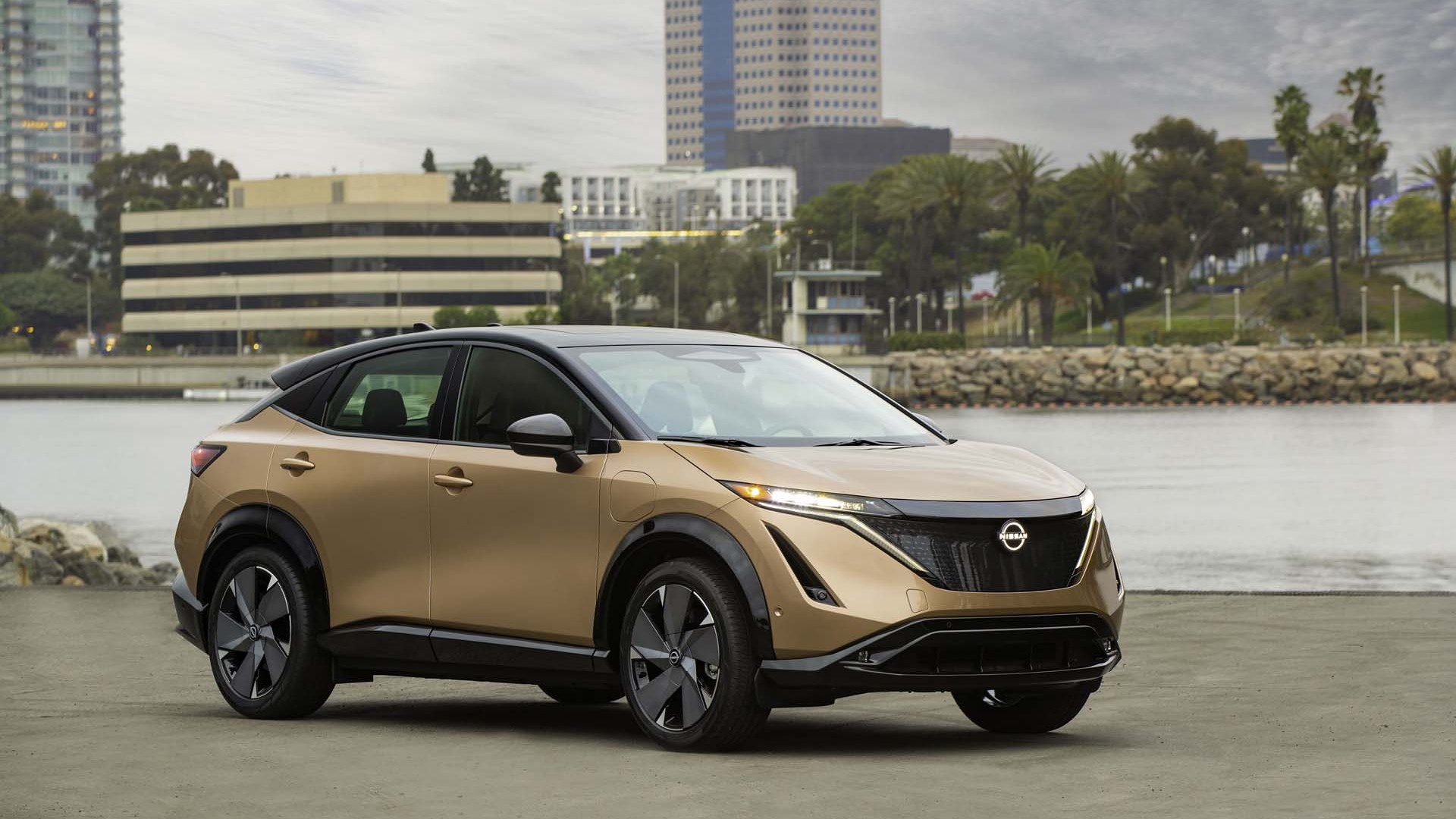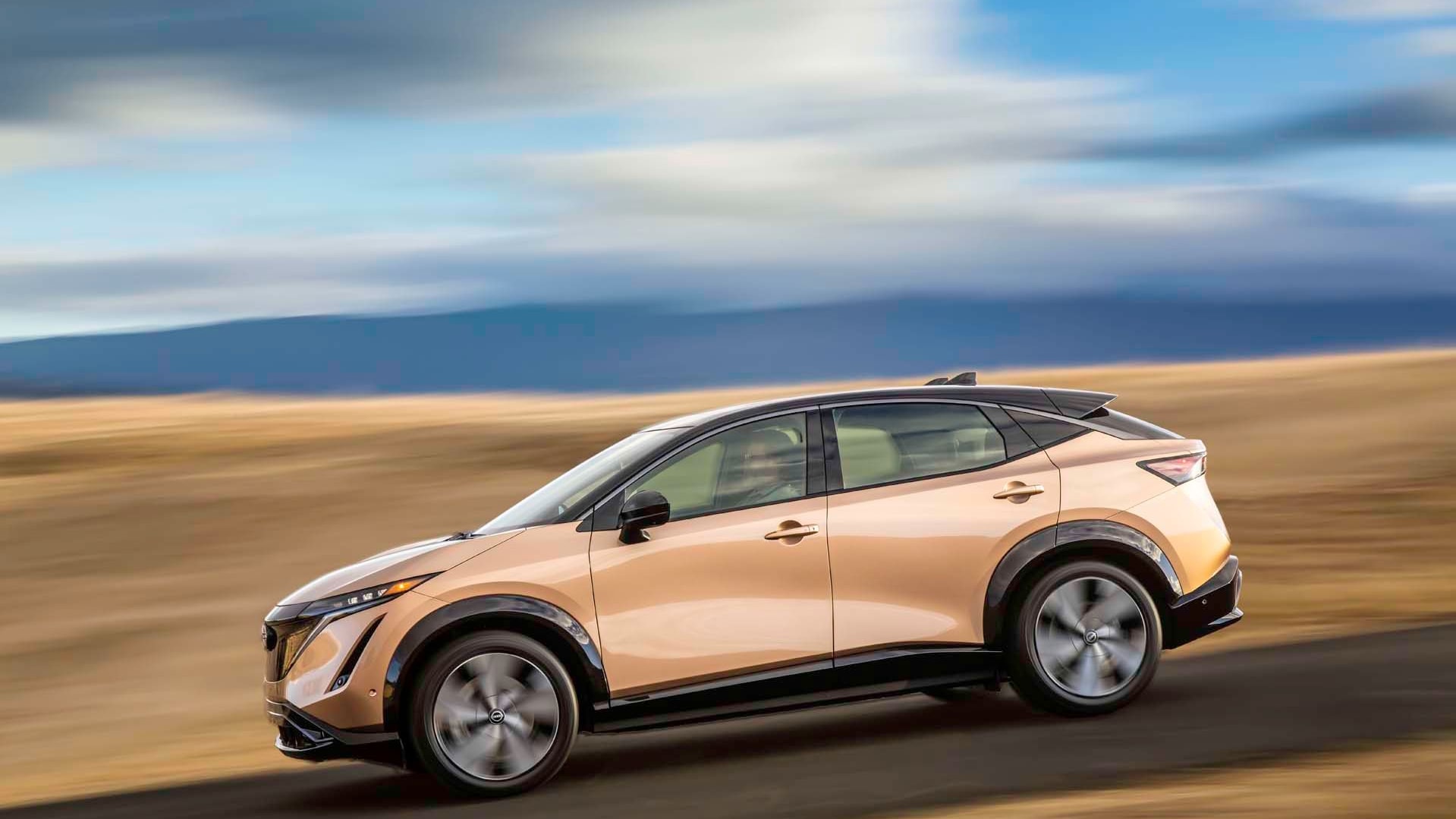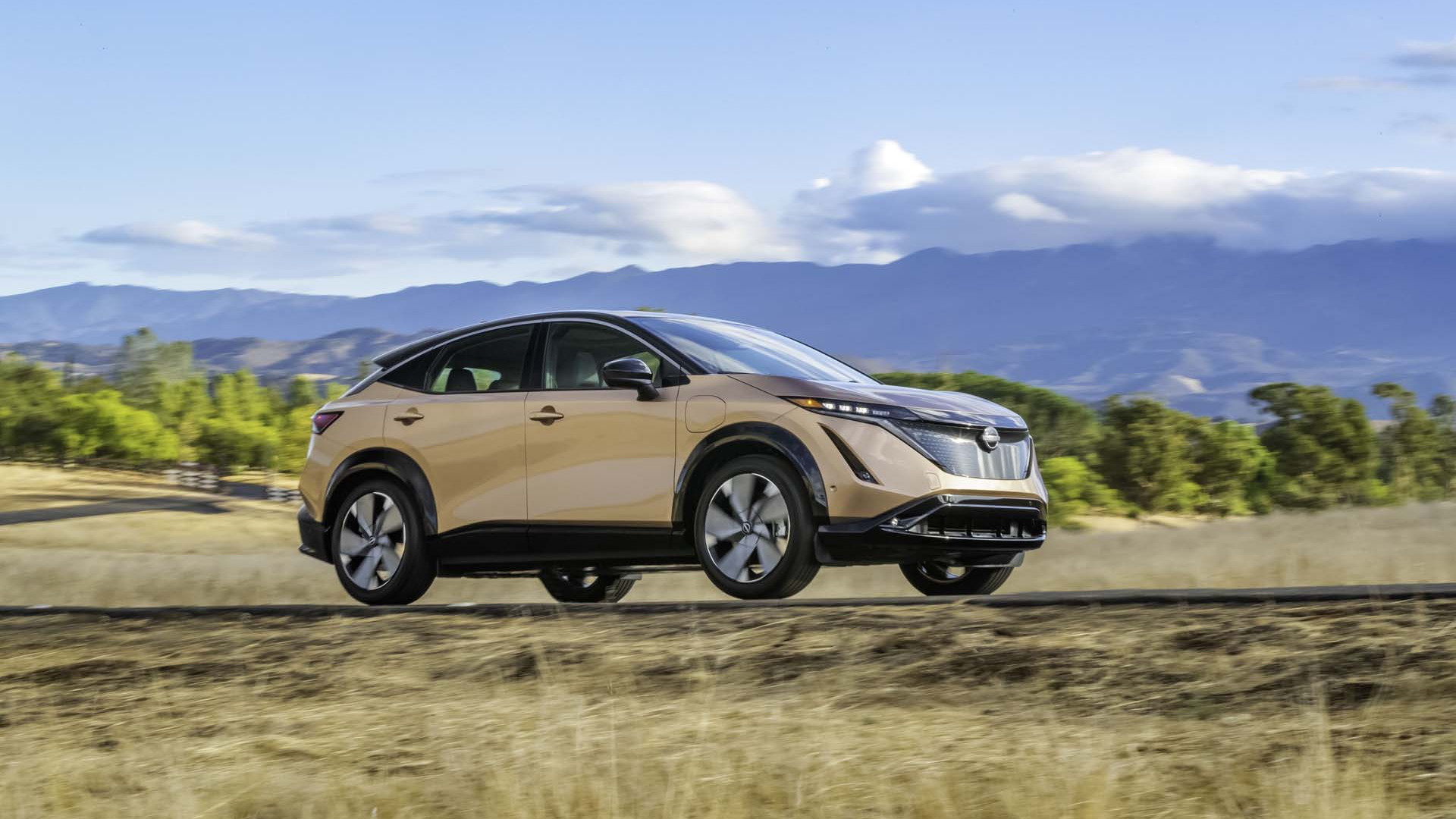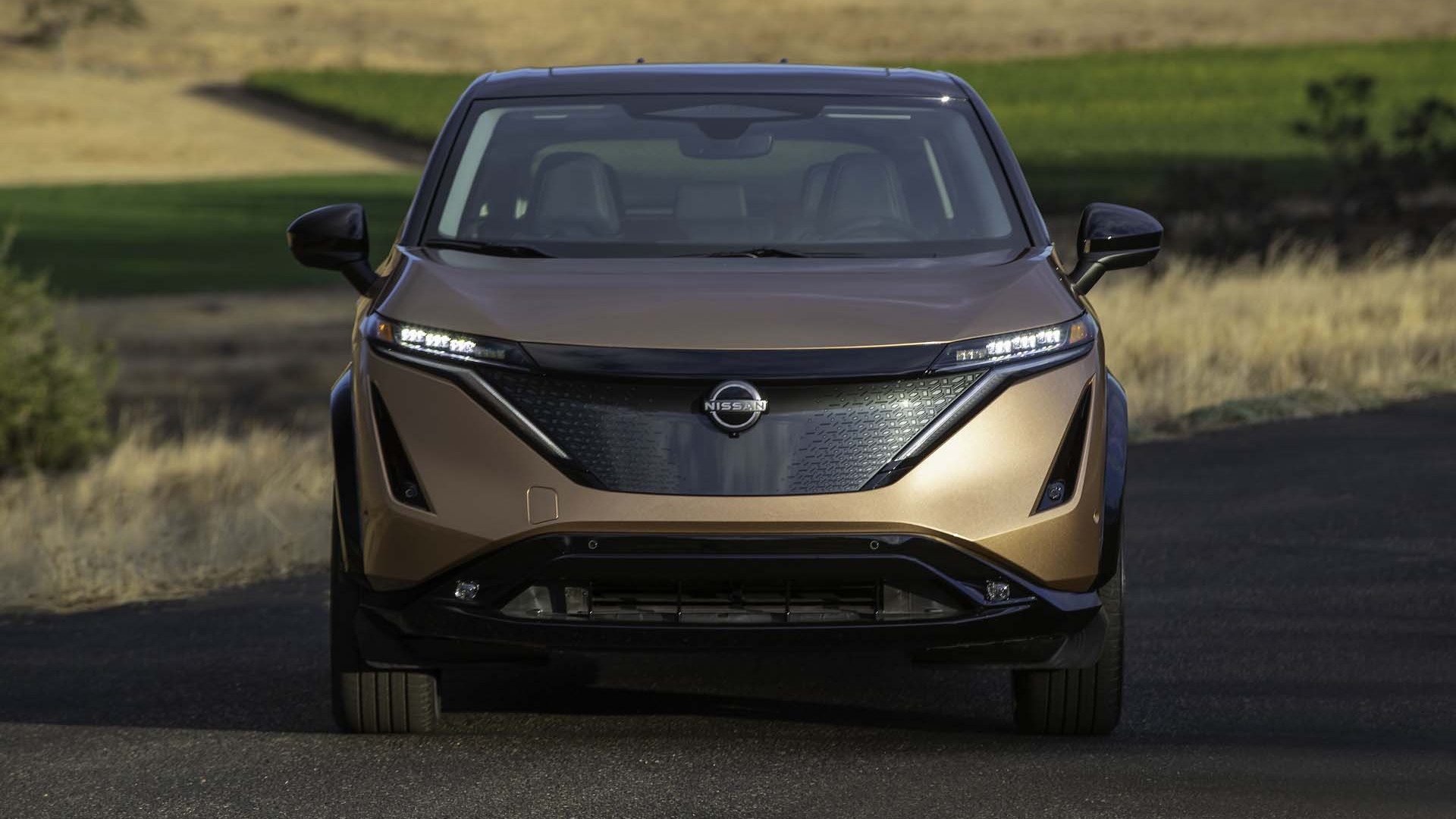With its Leaf, Nissan was the first mainstream, full-line automaker to offer a widely available, mass-produced electric vehicle in the U.S.
That was eleven years ago. And while it’s taken Nissan that long to push out a second EV model, the Ariya, the carmaker has made clear that the two models will coexist in the lineup.
The new Ariya, due to arrive for first deliveries this fall, will be offered in a full lineup including nine different models. So far Nissan has detailed four of those, with a larger 91-kwh (87-kwh usable) battery pack and delivering up to 300 estimated miles of EPA range. A standard-size 65 kwh (63-kwh usable) battery pack will be paired with some or all of the other five models and will offer something closer to the 215 miles (or 226 miles) currently offered by the Nissan Leaf Plus and its big 62-kwh pack.
Nissan’s e-4orce all-wheel drive system, which fully fuses the controls for its dual motors with suspension behavior and handling stability, is the star of the lineup and will arrive in late fall. But front-wheel-drive models with both packs will start arriving in early fall.
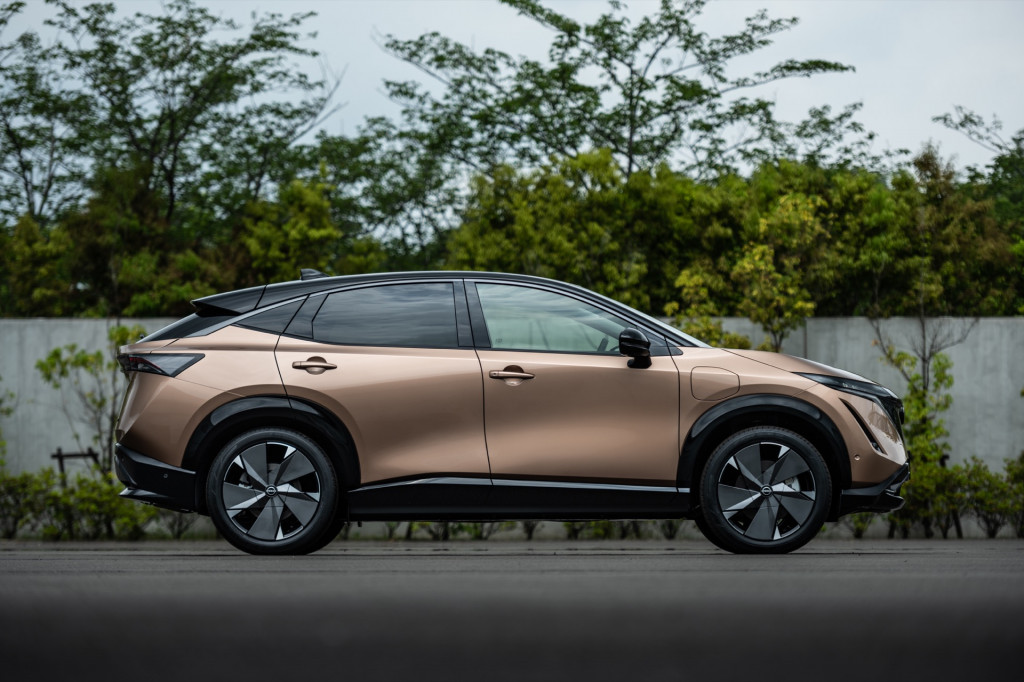
2023 Nissan Ariya (Japanese spec)
While Nissan has teased a starting price for models with the big pack, of $45,950, it’s said that pricing for models with the smaller pack will start “around $40,000.”
Yes, that means the Ariya will cost effectively the same as a Nissan Leaf Plus, in its popular middle SV trim, less than two years ago.
While some misunderstood the move to say that Nissan planned to replace the Leaf with the Ariya, this is not the case, Aditya Jairaj, Nissan's U.S. director of EV marketing and sales strategy, recently underscored to Green Car Reports.
“When we’ve got both cars on the market, there will be a specific spot for each model,” Jairaj said. “For example—the model year 2022 Leaf—we repositioned the Leaf; the place in our lineup shifted a little bit.”
With that “repositioning,” for the 2021 model year, Nissan dropped prices on the Leaf by more than $4,000. That made the standard Leaf with the smaller battery the cheapest electric car in the U.S. market.
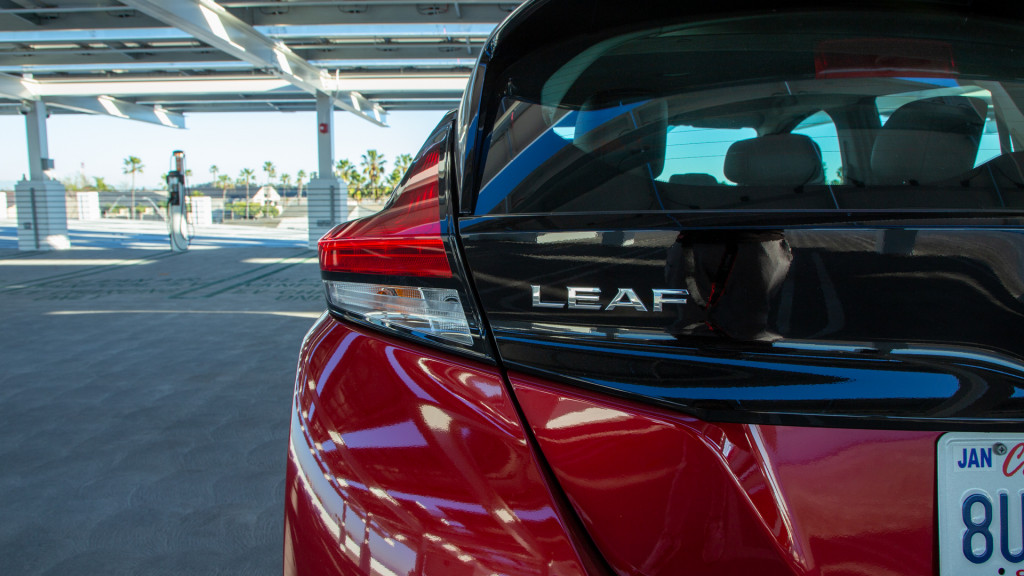
2021 Nissan Leaf SL Plus
According to Jairaj, that made room so customers could distinguish the difference between the two all-electric models across the showroom. “When the customer comes into a dealership, they cross-shop your models first, and then they cross-shop competitor models—so we have to make sure that our lineup is robust,” he explained.
And that leads to an important point. If buyers are eligible (via tax liability) for the $7,500 federal EV tax credit, the standard Leaf base price of $28,375 and the Leaf Plus starting price of $33,375 effectively amount to $20,875 and $25,875, respectively.
It also means that the base Ariya will check in at an effective starting price of $33,500 if you can claim the credit.
That’s a bargain next to the Tesla Model Y, which starts around $60,000 and isn’t eligible for the credit. It’s also competitive with tax-credit-eligible base models of the Volkswagen ID.4 and Hyundai Ioniq 5. Although an additional base version of the VW ID.4 arriving in 2023 will undercut them all, with an expected price of about $36,000 before the credit.

2023 Nissan Ariya
Only Tesla and GM vehicles aren’t eligible for the tax credit. They long ago reached a race ribbon of 200,000 qualifying EVs (battery electric and plug-in hybrid). Over the next year and a half, Toyota, Ford, and Nissan are expected to be the next three automakers to reach 200,000, triggering a four-quarter phaseout period.
According to an analysis from EVAdoption, Toyota will likely hit that in Q1 2022 and Ford will in Q3 2022 (or earlier, with E-Transit, F-150 Lightning, and Mach-E all qualifying by then). But Nissan won’t hit that magic number until Q2 2023 or later.
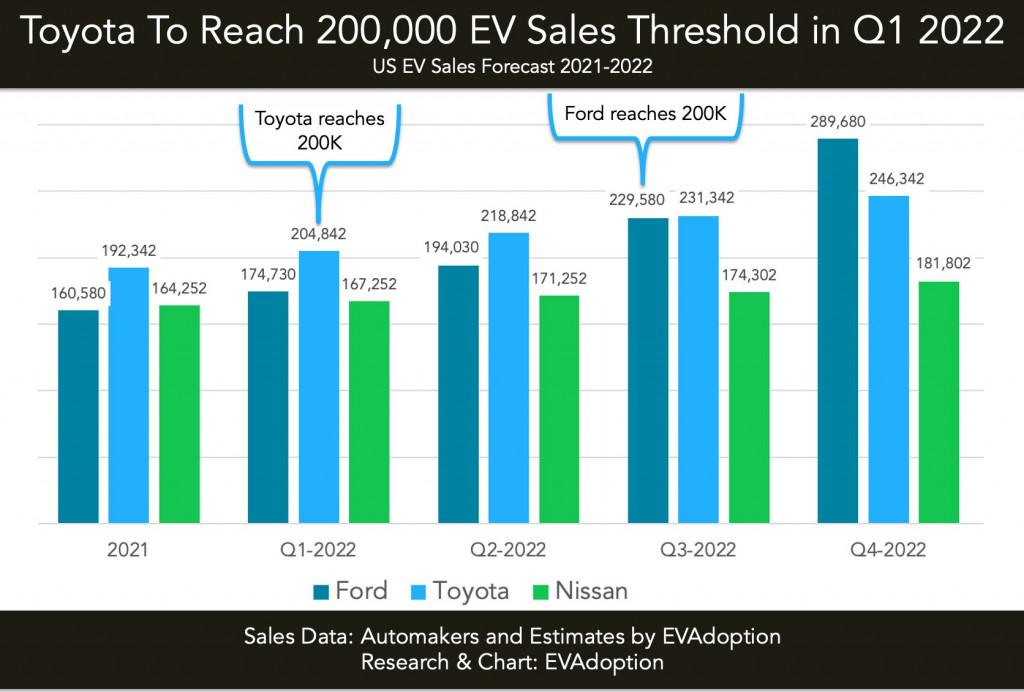
Timelines for Toyota, Ford, Nissan reaching 200,000-vehicle tax-credit phaseout - EVAdoption
Meanwhile, the EV tax credit itself did look bound for a revitalization this year, but with the Build Back Better bill now stalled indefinitely, that’s increasingly unlikely.
Nissan’s Jairaj admitted that the tax credit is an important piece of how the two EVs are positioned—and how Ariya and Leaf will coexist. “Leaf has a very specific place in our lineup. And the tax credit helps; it makes it more affordable,” said Jairaj. “The reach of the Leaf is definitely much more thanks to the tax credit.”
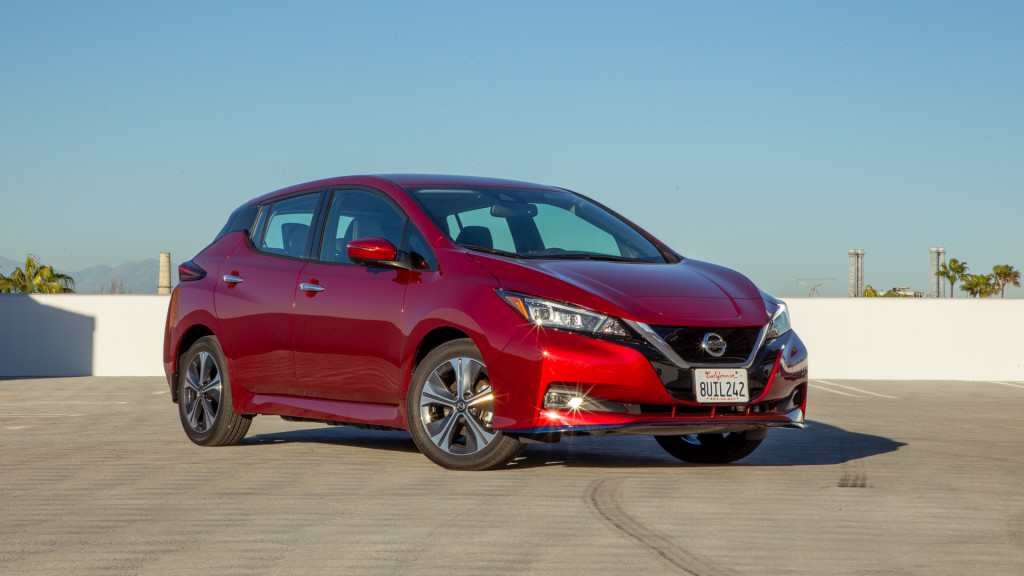
2021 Nissan Leaf SL Plus
Jairaj said that whether the tax credit does or doesn’t continue, that “has some implications” on how Leaf might be positioned.
“We have to make sure that the customer is getting what they want, otherwise none of the equation works.”
With about 5 billion consumer-driven miles and 160,000 Leafs in the U.S., Nissan also argues that it has a better understanding than other full-line automakers of what customers want—and the potential pain points. So those smarts will be applied to Ariya.
That will likely be long enough to carry the torch over to a long-awaited Leaf replacement—expected to be previewed by the Chill-Out concept shown late last year.
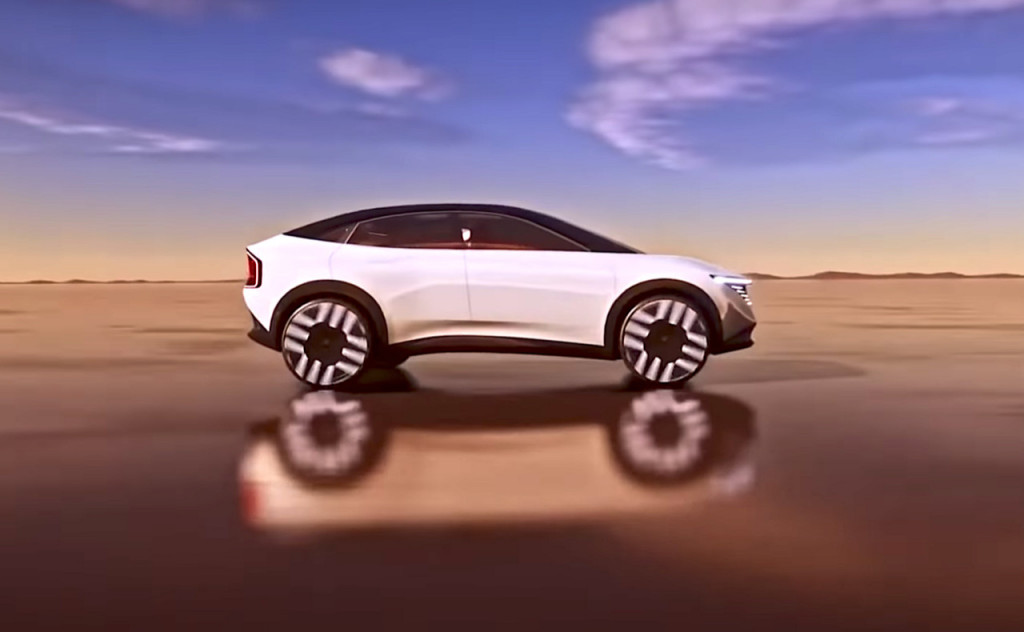
Nissan Chill-Out concept - December 2021
“For Nissan it’s all about having the right product at the right price at the right time,” added Nathan Sneddon, Nissan’s senior manager for U.S. product planning. “Our belief is definitely that it’s the right product for a certain position—and it will continue to remain in the lineup so long as that fact remains.”
Although many would argue that Nissan’s followup to the Leaf has been a painfully long time coming, two EVs, at two very relevant price points, is a good statement of intent for the future.
